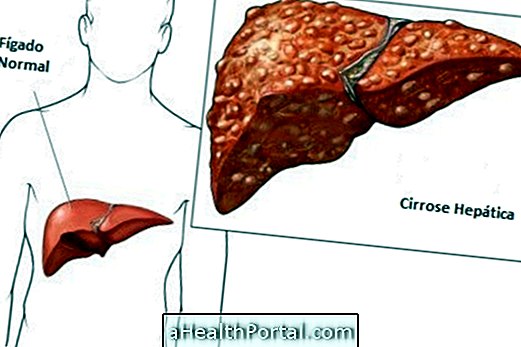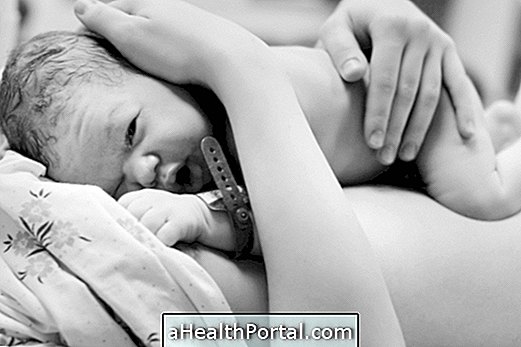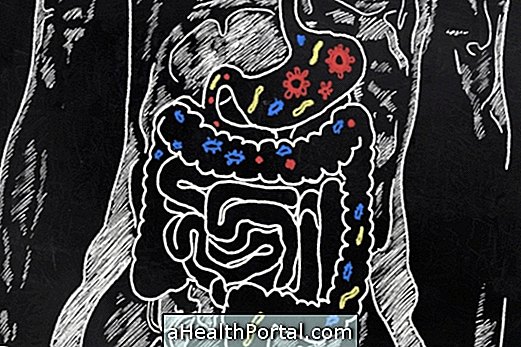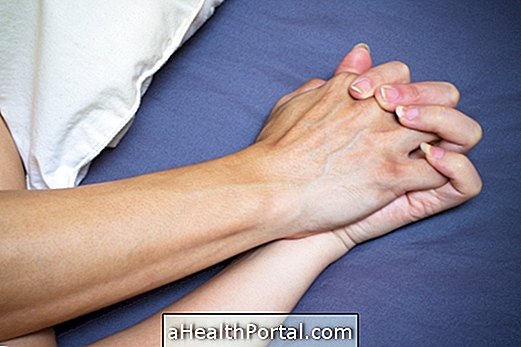Ataxia is a term that refers to a set of symptoms that are characterized, mainly, by the lack of coordination of the movements of different parts of the body. This situation can have several causes, such as neurodegenerative problems, cerebral palsy, infections, hereditary factors, cerebral hemorrhages, malformations and can arise from the excessive use of drugs or alcohol, for example.
Generally, the person with ataxia has difficulties in carrying out daily activities, such as picking up objects and buttoning clothes, and may have difficulty swallowing, writing and slurred speech, however, the severity of the symptoms depends on the type ataxia and associated causes.
Chronic ataxia has no cure, but it can be controlled to increase a person's quality of life. Therefore, when presenting the symptoms, it is necessary to consult a neurologist to initiate the appropriate treatment, which consists of the use of medications, physical therapy and occupational therapy.

Types of ataxia
Ataxia is associated with the appearance of several symptoms that can be different depending on the type. The types of ataxia are:
- Cerebellar ataxia: occurs due to damage to the cerebellum, which can be caused by cerebral hemorrhage, tumor, infection or accidents;
- FriedReich's ataxia: it is the most common type, being hereditary, arising mainly in adolescence and causing deformations in the feet and curvatures in the spine;
- Spinocerebellar ataxia: in most cases, this type appears in adulthood and causes muscle stiffness, memory loss, urinary incontinence and progressive loss of vision;
- Ataxia telangiectasia: it is also a hereditary type, however it is rare, being able to start in childhood and develop over time. Usually, the person with this type of ataxia has a weakened immune system;
- Sensitive or sensory ataxia: caused by lesions in the sensory nerves that lead the person to not feel where his legs are in relation to the body.
There is also a type of ataxia called idiopathic, which is characterized when the causes are not known and, in general, occurs in elderly people.
Main causes
Ataxia can occur in anyone without a definite cause, however, in most cases, it appears due to genetic factors, that is, it manifests itself due to defective genes, transmitted from parents to children, which can be worse from one generation to another.
There are some types of ataxia that are caused by certain conditions, such as brain surgery, tumor or head injury, excessive use of drugs or alcohol, exposure to toxic substances, serious infections, stroke and other neurodegenerative problems, such as cerebral palsy or sclerosis multiple, which is an autoimmune disease in which defense cells attack the nervous system. Understand what multiple sclerosis is, main symptoms and treatment.
Ataxia symptoms
Symptoms of ataxia vary according to the type and severity of the disease or injury to the nervous system, but in most cases they may arise:
- Lack of coordination in body movements;
- Loss of balance, frequent falls may occur;
- Difficulty picking up objects and buttoning clothes;
- Irregular eye movements;
- Difficulty swallowing;
- Difficulty writing;
- Excessive tremors;
- Slurred or slurred speech.
In cases of chronic ataxia, which cannot be cured, signs such as recurrent infections, back problems and heart disease due to neurological degeneration may appear. In addition, ataxia and associated symptoms can appear at any age, as there are cases where the person is born with this change.
How to confirm the diagnosis
When presenting ataxia and associated symptoms, it is important to consult a neurologist who will do an analysis of the health history of the person and the whole family, to check the possibility of this person having genetic and hereditary changes. The doctor may also recommend performing neurological tests to identify problems with body movements, vision or speech.
In addition, other tests can be recommended, such as magnetic resonance and computed tomography, which provide detailed images of the brain and through these tests the doctor can check the presence of brain lesions and tumors. And yet, the neurologist can request that the person perform blood tests and even lumbar puncture, to collect a sample of the liquid that circulates in the nervous system to be analyzed in the laboratory. Check out more what is lumbar puncture and what are the side effects.
How the treatment is done
The treatment for ataxia depends on the type and severity of the disease, it is indicated by a neurologist who can advise the use of antispasmodic and relaxing remedies, such as baclofen and tizanidine, or even, injections of botox to relieve muscle contraction caused by brain changes caused by ataxia.
For the treatment of ataxia it is also important that the person does physiotherapy exercises to decrease uncoordinated body movements and to prevent weakening of the muscles or muscle stiffness, the number of sessions depending on the degree of the disease and is recommended by the physiotherapist .
In addition, it is recommended that the person with ataxia undergo occupational therapy, as this activity can assist in the development of personal independence, helping the person to adapt to the gradual loss of movement, through the acquisition of new skills to perform daily activities.
Was this information helpful?
Yes No
Your opinion is important! Write here how we can improve our text:
Any questions? Click here to be answered.
Email in which you want to receive a reply:
Check the confirmation email we sent you.
Your name:
Reason for visit:
--- Choose your reason --- DiseaseLive betterHelp another personGain knowledge
Are you a health professional?
NoMedicalPharmaceuticalsNurseNutritionistBiomedicalPhysiotherapistBeauticianOther
Bibliography
- ASHIZAWA, Tetsuo, XIA, Guangbin. Ataxia. Continuum (Minneap Minn). Vol.22, n.4. 1208–1226, 2016
- NATIONAL INSTITUTES OF HEALTH. Ataxia-telangiectasia. Available in: . Accessed on 19 Feb 2020
- NHS. Ataxia. Available in: . Accessed on 19 Feb 2020
- UPTODATE. Overview of cerebellar ataxia in adults. Available in: . Accessed on 19 Feb 2020

























